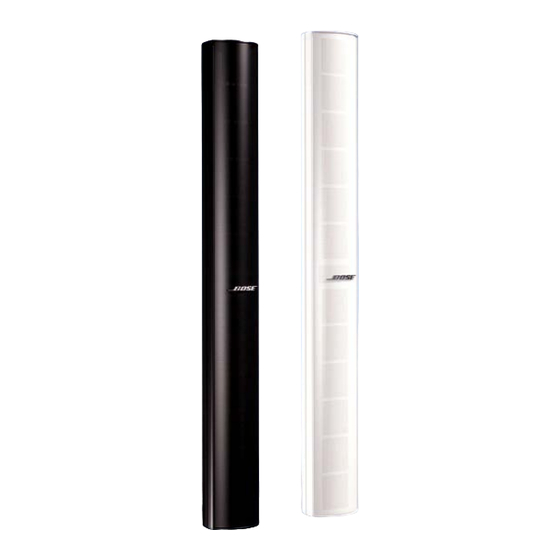Bose Panaray MA12 Instrukcja serwisowa - Strona 9
Przeglądaj online lub pobierz pdf Instrukcja serwisowa dla System głośników Bose Panaray MA12. Bose Panaray MA12 11 stron. Modular line array loudspeaker
Również dla Bose Panaray MA12: Podstawy techniczne i dyskusja (36 strony), Podręcznik użytkownika (2 strony), Instrukcja instalacji (16 strony), Instrukcja instalacji (8 strony), Instrukcja instalacji (7 strony)

1. Air Leak Test
1.1 Set up the system for test as shown in
Figure 5.
1.2 Apply a 100 Hz, 10 Vrms sine wave to
the input connectors.
1.3 Listen carefully for any air leaks from
around the end cap, drivers and the baffle.
Air leaks will be heard as a hissing or sput-
tering sound. All repairs must be hidden.
Test duration should be 5 seconds minimum.
2. Rub and Tick Test
2.1 Perform disassembly procedure 3. It is
not necessary to unplug the wires at the
driver assembly terminals.
2.2 Connect a signal generator directly to
the terminals of the driver under test.
2.3 Apply a 20 Hz, 5 Vrms sine wave to the
driver assembly.
2.4 Listen carefully for any extraneous
noises, such as rubbing, scraping or ticking.
Note: To distinguish between normal sus-
pension noise and rubs or ticks, displace the
cone slightly with your fingers.
Test Procedures
Audio Signal
Generator
Power Amplifier
INPUT
Figure 5. Panaray
®
MA12 Test Setup Diagram
OUTPUT
If the noise stays the same, it is normal
suspension noise and the driver is fine.
Suspension noise will not be heard with
program material.
3. Phase Test
3.1 Momentarily apply 10 VDC to the loud-
speaker input connector. Apply the positive
to pin "1+" and the negative to pin "1-" of the
®
Neutrik
connector.
3.2 When applying the DC voltage level,
observe the driver cones. They should all
move outward when the DC level is applied.
3.3 Rewire any incorrectly wired driver.
4. System Sweep Test
4.1 Set up the system for test as shown in
Figure 5.
4.2 Apply a 10 Hz, 10 Vrms sine wave to the
loudspeaker input connector.
4.3 While listening to the output of the
system, sweep the input frequency slowly
from 10 Hz to 20 kHz.
4.4 Listen carefully for any extraneous
noises such as buzzing or ticking.
9
